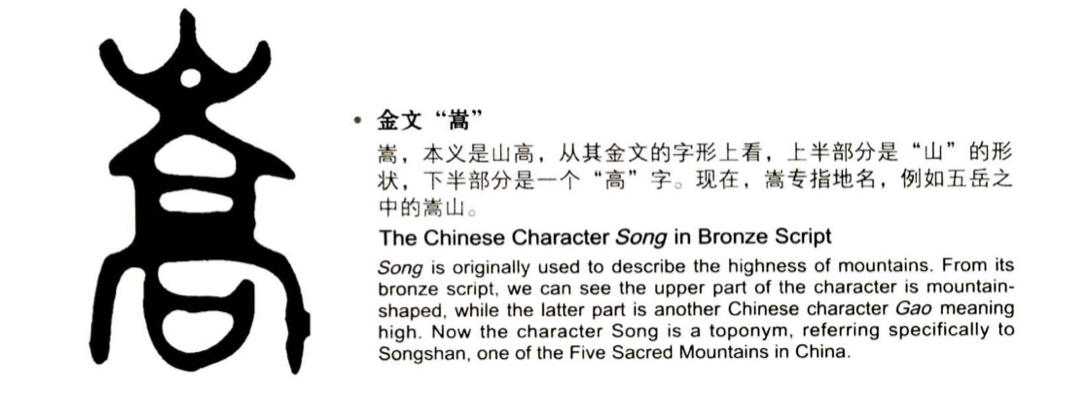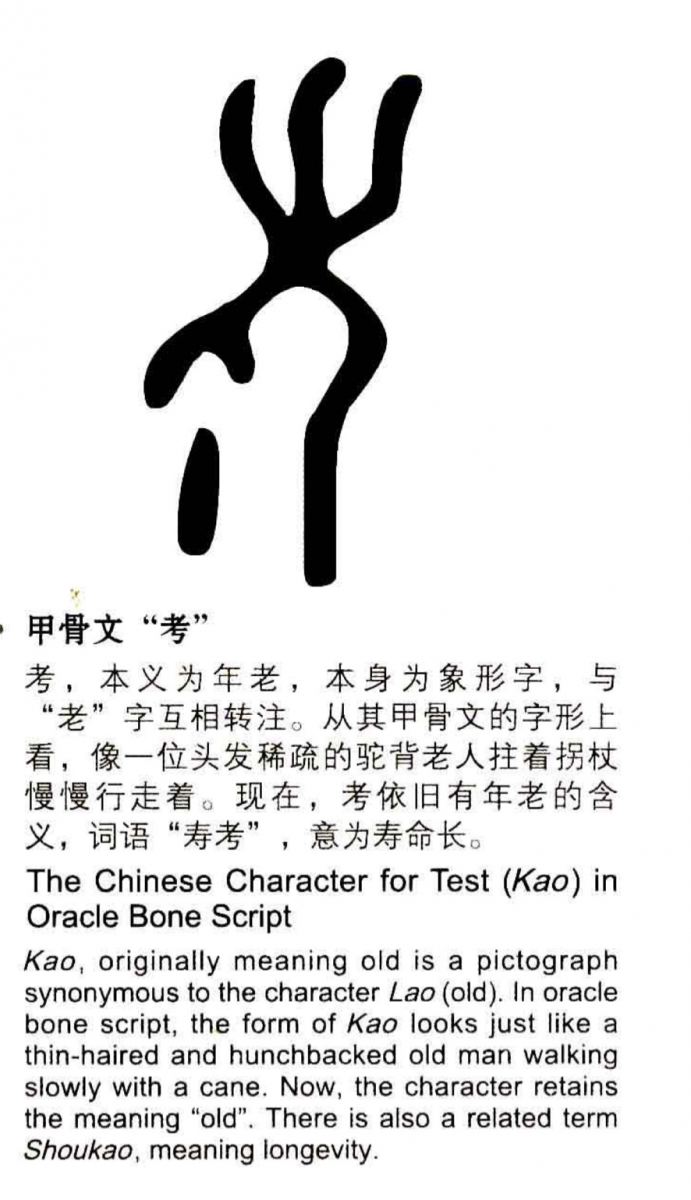汉字造字法
中华民族的先辈经过长年累月的积累,创造了丰富而博大精深的汉字。经过几千年的发展演变,汉字仍旧被中华民族所使用,其总量最多时有近十万字,日常使用的汉字字数也有几千字。先民通过日常积累,运用六书造字法创造了各式各样的汉字.
The Formation of Chinese Character
After a prolonged period of cultural development, the Chinese predecessors culminated in the creation of the intricate and vibrant Chinese writing system. Over millennia, this script has persisted and remains actively employed. At its zenith, the repertoire of Chinese characters extended to approximately one hundred thousand symbols, with thousands being regularly utilized in daily communication. Thus, through the categorization delineated by the Six Categories of Chinese Characters, ancient scholars continuously generated a diverse array of these linguistic symbols.
六书造字法,指象形、指事、会意、形声、转注和假借六种造字方法。“六书”一词最早出现在西周时期的儒家经典著作《周礼》一书中, 虽然有所提及,但没有加以解释。东汉时期,许值的《说文解字》一书详细地阐释了六书的含义,这也是历史上对六书定义的首次正式记载。
The concept of the Six Categories of Chinese Characters encompasses six fundamental principles governing their formation, namely: pictogram, ideogram, ideogrammic compound, phono-semantic compound, transformed cognate, and rebus. The initial mention of this categorization emerges within the "Rites of Zhou," a prominent Confucian classic originating from the Western Zhou Dynasty (1046 B.C. - 771 B.C.). However, the text provides no extensive elucidation on this classification. It wasn't until the Eastern Han Dynasty (25-220) that Xu Shen extensively expounded upon the essence and significance of the Six Categories of Chinese Characters in his renowned work, "Shuowen Jiezi." This historical text stands as the inaugural comprehensive documentation providing an official and detailed definition of these categories within the context of Chinese linguistic evolution.
象形
象形造字法,就是依照事物的外貌特征,用线条、笔画描绘出来的造字方法。用象形造字法创造的文字叫做“象形字”,象形字来源于图画,因此较为容易辨认和区别。汉字中的动物、器物等,这些是在实际生活当中出现的实物,大多为象形字,它们都具有形象的外貌特征。
Pictogram
Pictograms, within the realm of Chinese characters, operate as hieroglyphs portraying the physical attributes of objects through strokes or lines. These characters, recognized as pictographs or pictograms, visually represent tangible elements and possess a distinctly pictorial quality, facilitating their identification and differentiation. Predominantly, characters associated with animals, tools, or tangible entities in reality align with the pictographic form, faithfully retaining the physical traits of the objects they symbolize.

指事
随着人们沟通、交流的语言不断丰富,指事、会意、形声等造字方法逐渐出现,它们在原有的象形字基础上,通过对象征性符号进行拼合、增减而形成新的文字。指事造字法,就是用象征性的符号或在图形上加些指示性符号,来表示文字意义的造字方法。使用指事造字法创造的文字叫做“指事字”。在象形字的基础上,指事字增加了表意的标志,它是会意字、形声字的重要构成要素。指事字表达的一般是抽象概念,文字意义更加隐晦,指事字的数量是六种造字法所创造的汉字中最少的。
Ideogram
As human language evolved, diversifying the modes of communication, additional principles of character formation gradually emerged, such as ideograms, ideogrammic compounds, phono-semantic compounds, among others. These novel characters evolved from existing pictograms and were subsequently modified through amalgamation, expansion, or reduction of constituent symbols. One technique involved signifying meaning by employing symbols or adding distinctive annotations to preexisting graphical characters. These resultant characters are commonly referred to as ideograms. Ideograms, a pivotal aspect of ideogrammic and phono-semantic compounds, often integrate ideographic signs with pictograms to convey specific meanings. However, their significance primarily pertains to abstract concepts, veiling literal interpretations. Consequently, ideograms constitute the smallest subset among the Six Categories of Chinese Characters due to their inclination towards conveying abstract notions rather than concrete representations.

会意
会意造字法是根据汉字的意义关系,将两个或两个以上的字组合成一个字的造字方法。用会意造字法创造的文字叫做“会意字”。 例如,“明”由“日”和“月”组成,其意义是指日光加月光,即光明。还有两个或者几个同样的字重叠而成的会意字,例如两个“木”组成的“林”, 意为树林;两个“人”组成的“从”,意为跟从、跟随;三个“木”组成的“森”, 意为森林;三个“人”组成的“众”,意为众多。
ldeogrammic Compound
The ideogrammic compound, a mechanism within Chinese character formation, involves the amalgamation of two or more characters sharing related meanings to engender a distinct third character. This resulting character, often termed an associative compound, derives its significance from the collective essence of its constituents. For instance, the fusion of "Ri" (representing the sun) and "Yue" (symbolizing the moon), both natural sources of light, culminates in "Ming," signifying brightness. Furthermore, the replication of a character—doubling or tripling—can also yield ideographic compounds. For instance, duplicating the pictogram "Mu," representing a tree, yields "Lin," connoting a grove, whereas triplication generates "Sen," denoting a forest. Similarly, duplicating the character "Ren," symbolizing a man, yields "Cong," indicating a follower, while triplication results in "Zhong," representing a multitude or a gathering.


形声
形声造字法,是指由形旁和声旁共同组成文字的一种造字法,形旁代表文字的意义,声旁表示文字的发音。因为汉字是表意性的文字,不能直接显示字音,除了需要依靠拼音来注明字音外,声旁也可似帮助提供字音信息。用形声造字法创造的文字叫做“形声字”。形声是汉字造字法中造字最多的方法,形声字占汉字总数的80%以上。受到古今字音、字形的变化的影响,现在的形声字声旁的表音作用已经变得十分有限。
形声字的形旁和声旁有六种组合方式:左形右声,左声右形,上形下声,上声下形,内形外声,内声外形。
Phono-semantic Compound
This specific type of character construction comprises a pictographic component connoting the character's meaning and a phonetic element indicating its pronunciation. Given the ideographic nature of Chinese characters, which inherently do not directly convey pronunciation, both the Pinyin system for phonetic representation and the inclusion of a phonetic component become essential to provide sound-related information. Characters developed through this method are collectively termed phono-semantic compounds, constituting over 80% of Chinese characters. However, due to linguistic shifts over time and modernization's impact on script simplification, the phonetic components of numerous characters have gradually lost their accuracy in reflecting pronunciation.

转注
转注造字法,是指两个字互相注释,用转注造字法创造的文字叫做“转注字”。转注造字法有三种种不同的说法,一是形同而转,二是义同而转,三是音同而转。由转注造字法所创造的文字字数较少。
Transformed Cognate (Derivative Cognate)
Characters formulated through this methodology often exhibit a reciprocal explanatory nature. They might share similarities in appearance while differing in both meaning and pronunciation, or they could align in meaning yet diverge significantly in pronunciation and form. Additionally, these characters might share phonetic similarities while displaying differences in both form and meaning. These instances exemplify transformed cognates, a category that constitutes a relatively minor proportion within the vast landscape of Chinese characters.

假借
假借造字法,就是借用现有的一个与其同音或音近的字来表达这个本不存在的字。用假借造字法产生的文字叫做“假借字”,它与本有其字、但和另一个字通用的通假字不同。
Rebus
This category covers cases where an existing character is used to represent a nonexistent word with similar or identical pronunciation. Rebus, also known as loaned or borrowed character, is different from Tongjia character, which is an interchangeable character used for an existing homophonous character.

